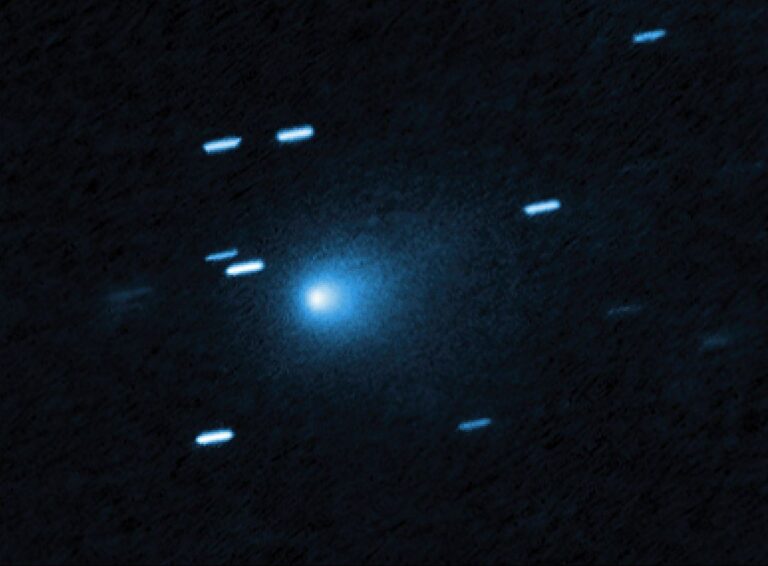Key Takeaways:
Those studying the sky calculate square degrees the same way someone on Earth figures out the area of a rectangle or a circle. If a sky object measures 1° by 2°, it’s like a box measuring 1 foot by 2 feet. The areas are 2 square degrees and 2 square feet, respectively. And while you can designate the latter 2 ft2, there’s no easy abbreviation for square degrees.
We don’t always use degrees, however. For smaller objects, we use arcminutes or even arcseconds. Here’s an example: The Full Moon has an average diameter of 31.075 arcminutes, designated 31.075′. To find its area, use the formula for the area of a circle, πr^2, where r is the radius. The answer, then, is π(15.5375)^2, or approximately 758 square arcminutes.
That’s a valuable number to us because we often compare the size of a deep-sky object to that of the Full Moon. For example, if Galaxy X measures 19′ by 11′, it has an area of 209 square arcminutes. Divide that by 758, and you can say Galaxy X covers 28 percent as much area of sky as the Full Moon.
Finally, to find the number of square degrees in the entire sky, use the formula for the area of a sphere, 4πr2, where r = 1 radian (57.29577951°). So, the total area of the celestial sphere is 41,252.96125 square degrees. We have used this number occasionally to list the “percentage of sky” a certain constellation covers: Ursa Minor contains 255.86 square degrees. Therefore, it covers 0.62 percent of the entire sky.
Senior Editor










